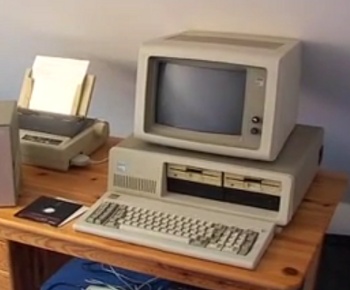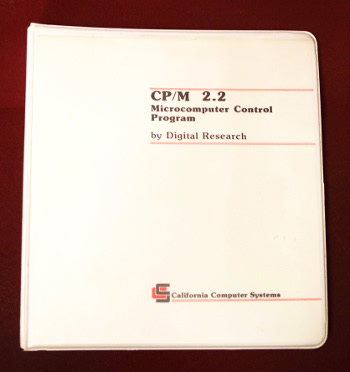William C. Lowe, Personal Computing Pioneer
November 8, 2013
As my own personal experience shows, and as others will attest, large
manufacturing corporations are not
innovators. They enjoy the
status quo, and they prefer incremental improvements of their products over new products. Some make up for this shortcoming by acquiring smaller companies with innovative products, while others diminish over time and finally cease to exist. The current corporate mindset is that
R&D is an
expense, not an
investment.
Imagine
management's feedback at the meeting where an
employee of a
toothbrush manufacturer first suggested an
electric toothbrush. "We're
making enough money with our current toothbrushes. They're easy to manufacture, so our
profit margin is high. Are people so
lazy they can't brush their own
teeth? Who wants to replace
batteries, and everybody knows that
electricity and
water is a deadly combination."
William C. Lowe, who died on October 19, 2013, at age 72,[1-5] may have faced a similar grilling in 1980 while he worked to convince
IBM to
develop and
market a
personal computer. His approach was antithetical to his employer's
business strategy. Foremost, IBM was a manufacturer of "big iron," the common term for
mainframe computers of that era, and a personal computer was a very small chunk of
steel.
IBM's products were built in a
vertically integrated environment, where even some
nuts and
bolts might be manufactured in-house, and Lowe's proposed computer would be built from
components not manufactured by IBM. As a further insult to management, even the
operating system software would come from elsewhere; and software, then as today, has a huge profit margin. This software decision led to the long term
hegemony of
Microsoft in the personal computer business, as explained below.

The IBM 5150, IBM's first personal computer.
(Still image from a YouTube Video by Akai Uher.)
William Cleland Lowe was born in
Easton, Pennsylvania, on January 15, 1941, and he attended nearby
Lafayette College, graduating with a
Bachelor of Science degree in
physics.[1-3] Immediately after college, Lowe joined IBM in 1962 as a
product test engineer in
Endicott, New York. Lowe rose quickly through the IBM ranks, being named
director of development and manufacturing operations for the General Systems Division in
Atlanta, Georgia, in 1975.[1]
Lowe was director of the
IBM Boca Raton Labs in 1980 shortly after personal computers from
Apple,
Commodore, and
Atari had entered the market.[3] There are reports at that time of Atari's proposing to manufacture a computer that IBM would sell; or, that IBM might
acquire Atari for this purpose. There are also reports that Lowe had presented the Atari scenario to IBM management, only to be told that it was "the dumbest thing we've ever heard of."[3]
Not surprisingly, IBM management thought that IBM should launch a personal computer of its own manufacture, and it should do this quickly. This meant stepping away from "Big Blue's" typical multi-year, vertically-integrated development cycle in which everything was done in-house.[2] IBM's
CEO at the time,
Frank T. Cary, instructed Lowe to bring an IBM personal computer to market within a year, so Lowe assembled a team of twelve engineers, called "The Dirty Dozen," for this effort, code named, "Project Chess."[3] The only way this could be accomplished would be through use of third-party hardware and software.[4]
The electronic hardware was easy to obtain, but the operating system software was another matter. At that time,
Digital Research had a highly popular operating system,
CP/M; and Microsoft sold application software, including a
Basic computer language interpreter coauthored by
Bill Gates, himself, that ran under CP/M.[4] Microsoft was happy to team with IBM under the conditions set; but, Digital Research was a successful company in its own right, and it was leery of the conditions in IBM's
non-disclosure agreement.[4]

Manual for the Digital Research CP/M operating system, version 2.2., dated January, 1978.
This was a set of reproduced typewritten pages in a ring binder.
(Photograph of author's copy.)
IBM went back to Microsoft, and Bill Gates devised a plan whereby Microsoft would acquire an operating system,
QDOS (Quick and Dirty Operating System), from
Seattle Computer Products and modify it for IBM's needs. This operating system became
IBM PC DOS, and it was also sold by Microsoft as
MS-DOS after a few years.[4]
The
IBM Model 5150 Personal Computer was introduced on August 12, 1981, at $1,565 ($3,900 in today's money), not including a
monitor.[2-3] Its hardware included an
Intel 4.77MHz 8088 microprocessor, 16
kilobytes of
RAM (expandable to 256K), and it could be purchased at
Sears.[3] Lowe had expected to sell 220,000 units in a three-year period, but actual sales were six times this figure in just the first year.[3-4] The 220,000 unit estimate was actually larger than the entire
installed base of all IBM computers at the time.[3]
The real winners in all this were Intel and Microsoft. Since IBM had acquired its PC components from third-parties, there was soon a plethora of "
PC-compatible" computers, all of which used the Intel CPU chip and MS-DOS. These computers were less expensive and often included hardware features not on IBM machines. One hurdle in all this was IBM's
copyright on the
BIOS ROM, which contained the code to interface the hardware with software. The BIOS code was easily "
reverse-engineered."
Lowe became
vice president of IBM's System Products Division (
White Plains, New York) in 1982, and then its
president, in March 1985. He was elected an IBM corporate vice president in January 1986.[1] IBM introduced its
PS/2 computer in 1987, hoping to regain market share with an improved operating system called
OS/2, which was ironically coded in partnership with Microsoft.[4] Lowe left IBM for
Xerox in 1988, reportedly because of better opportunity with Xerox rather than problems with IBM.[2] Lowe eventually became CEO of
Gulfstream Aerospace in 1991.[3]
References:
- William C. Lowe biography on IBM web site.
- William Yardley, "William C. Lowe, Who Oversaw the Birth of IBM's PC, Dies at 72," The New York Times, October 28, 2013.
- Steven Musil, "William Lowe, the 'father of the IBM PC,' dies at 72," CNET, October 28, 2013.
- Iain Thomson, "RIP Bill Lowe: Father of the IBM PC no longer reading drive C," The Register (UK), October 29, 2013.
- Cécile Bolesse, "Le père de l'ordinateur indivisuel d'IBM, William C. Lowe, est décédé," 01Net, October 30, 2013.
Permanent Link to this article
Linked Keywords: Manufacturing; corporation; innovation; innovator; status quo; research and development; R&D; expense; investment; management; feedback; employee; toothbrush; manufacturing; manufacturer; electric toothbrush; profit; profit margin; sloth; laziness; tooth; teeth; battery; electricity; water; William C. Lowe; IBM; development; market; personal computer; strategic management; business strategy; mainframe computer; steel; vertical integration; vertically integrated; nut; bolt; electronic component; operating system; software; hegemony; Microsoft; IBM Personal Computer 5150; YouTube Video; Akai Uher; Easton, Pennsylvania; Lafayette College; Bachelor of Science degree; physics; product testing; engineer; Endicott, New York; director; Atlanta, Georgia; IBM Boca Raton Labs; Apple; Commodore International; Atari; mergers and acquisitions; chief executive officer; CEO; Frank T. Cary; Digital Research; CP/M; Basic computer language; interpreter; Bill Gates; non-disclosure agreement; typewriter; typewritten; ring binder; QDOS; Seattle Computer Products; IBM PC DOS; MS-DOS; IBM Model 5150 Personal Computer; computer monitor; Intel; clock rate; 4.77MHz; 8088 microprocessor; kilobyte; random-access memory; RAM; Sears; installed base; PC-compatible; copyright; BIOS; read-only memory; ROM; reverse engineering; reverse-engineered; vice president; White Plains, New York; president; IBM Personal System/2; PS/2 computer; OS/2; Xerox; Gulfstream Aerospace.